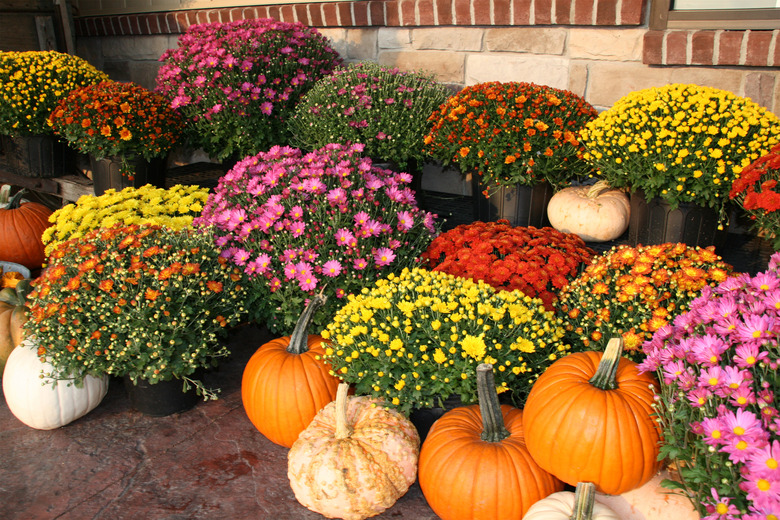What Temperatures Do Mums Withstand?
Cheerful, long-lasting, colorful chrysanthemums (Chrysanthemum spp.) are a fall favorite with home gardeners and florists alike. Equally happy in the ground or in a container, hardy mums tolerate a wide range of temperatures and are the perfect pick-me-up for a fading summer garden.
But how long exactly do mums last in your garden or on the porch? Some garden mums can survive well into the winter and perhaps make it to next year if planted at the right time and given the right care, but even if the flowers die, well-established roots will regrow in the spring.
Purchased mums to spruce up your front porch or your fall garden and wondering what temperatures they can tolerate? Here's what to know.
How Mums Handle Cold Temperatures
How Mums Handle Cold Temperatures
According to the USDA map, the lowest minimum temperatures that mums can survive are right around minus 20 degrees Fahrenheit. Many homeowners plant mums for fall color and dispose of them at the end of the season, not realizing these cheery flowers are actually perennial plants — meaning they can survive a frost and return the following year.
In general, mums are hardy in U.S. Department of Agriculture plant hardiness zones 4 through 9, although this can vary slightly by species and cultivar. However, it's important to note that this is true only if the mums are hardy garden mums and usually when they are planted in the spring so that their roots are allowed to become established.
Because most mums bloom in late summer and early fall, many home gardeners plant mums in late summer and early fall as a way to spruce up their garden. Mums planted this late will not likely survive cold winters because they have shallow roots.
How to Winterize Mums
How to Winterize Mums
Increase your mums' chances of survival by covering them with a 4-inch layer of mulch after the ground has frozen — and resist the urge to deadhead the dead foliage. Yes, that first hard frost of winter will likely kill the plants to the ground, but that doesn't mean the roots are dead. Hardy garden perennials will return to life in the spring if their roots are established and protected.
It's important to understand that in order for mum roots to survive single-digit winter temperatures, you should plant hardy garden mums in the spring. The roots will have the entire growing season to develop, and when winter comes, they will have developed sufficient natural sugars to nourish them during dormancy.
Can Mums Survive Hot Weather?
Can Mums Survive Hot Weather?
Most mums can survive hot weather if they are given plenty of water, but heat tolerance varies widely by species and cultivar. If you have temperatures that average in the 90s and 100s during the summer, it's best to plant mums where they won't be in full sun (and receive some afternoon shade). It's also a good idea to look for heat-tolerant cultivars. Blooms are triggered by fading summer days and cool nights, however, so if nighttime temperatures are too warm — above average for your area for several nights in a row — blooming might be delayed.
Can Mums Survive Frost?
Can Mums Survive Frost?
Yes, mums can survive frost and can even handle temperatures of minus 20 degrees Fahrenheit. But it's important to understand that this only applies to hardy garden mums. Potted fall mums can survive a light frost, but it's best to bring these fall flowers inside when freezing temperatures are expected so they don't get damaged.
What Temperatures Can Potted Mums Survive?
What Temperatures Can Potted Mums Survive?
Potted mums purchased at a nursery, garden center, or grocery store can survive in temperatures that dip down into the 20s and can handle an occasional light frost in a pot but are definitely more susceptible to damage from cold temperatures. If your area is expecting a hard freeze, bring your mums indoors to protect the roots. A potted mum can overwinter safely in a cool, dim spot, such as a basement or insulated garage, and then be gradually acclimated to return outdoors in spring.
